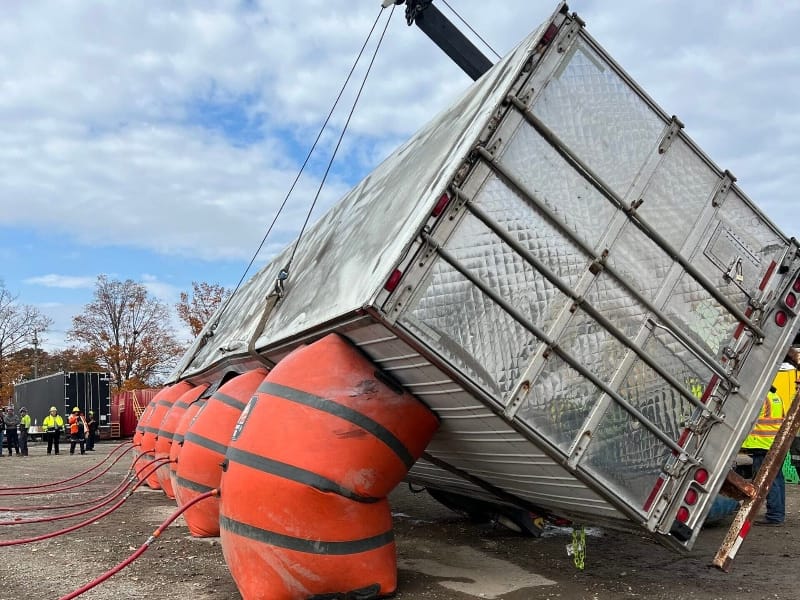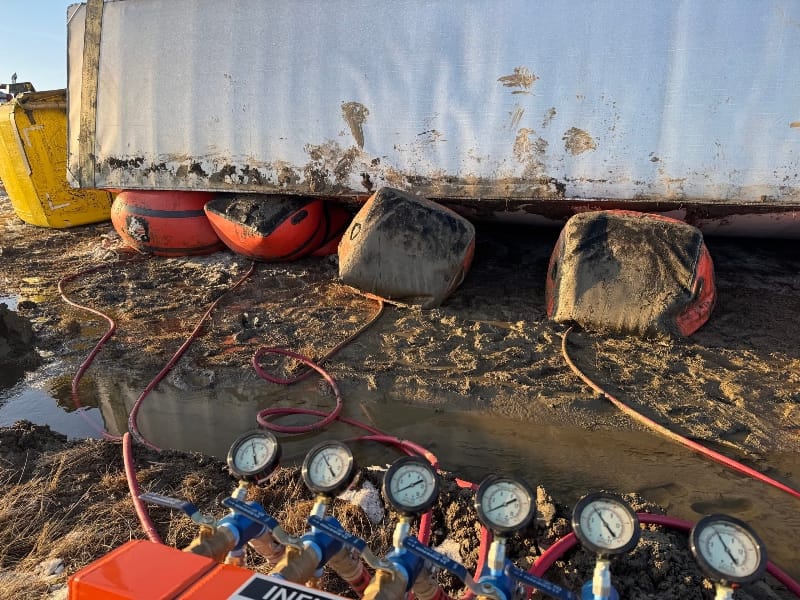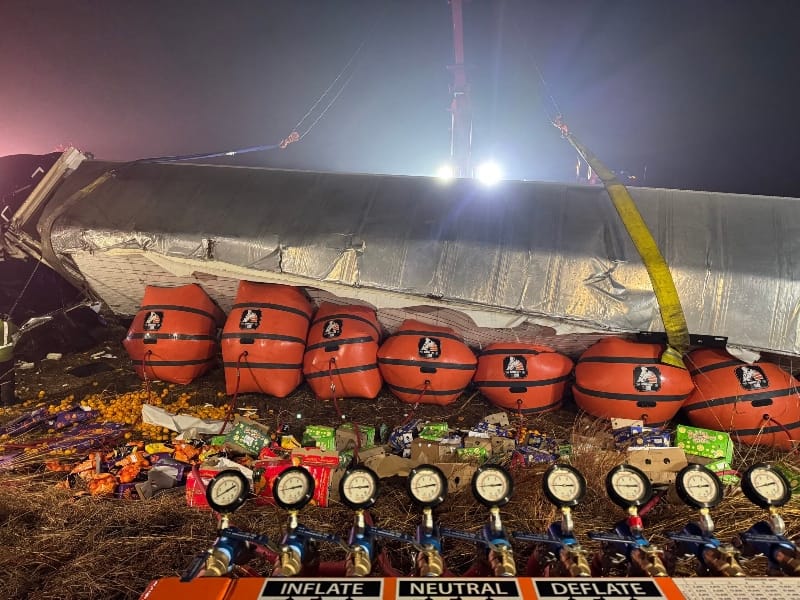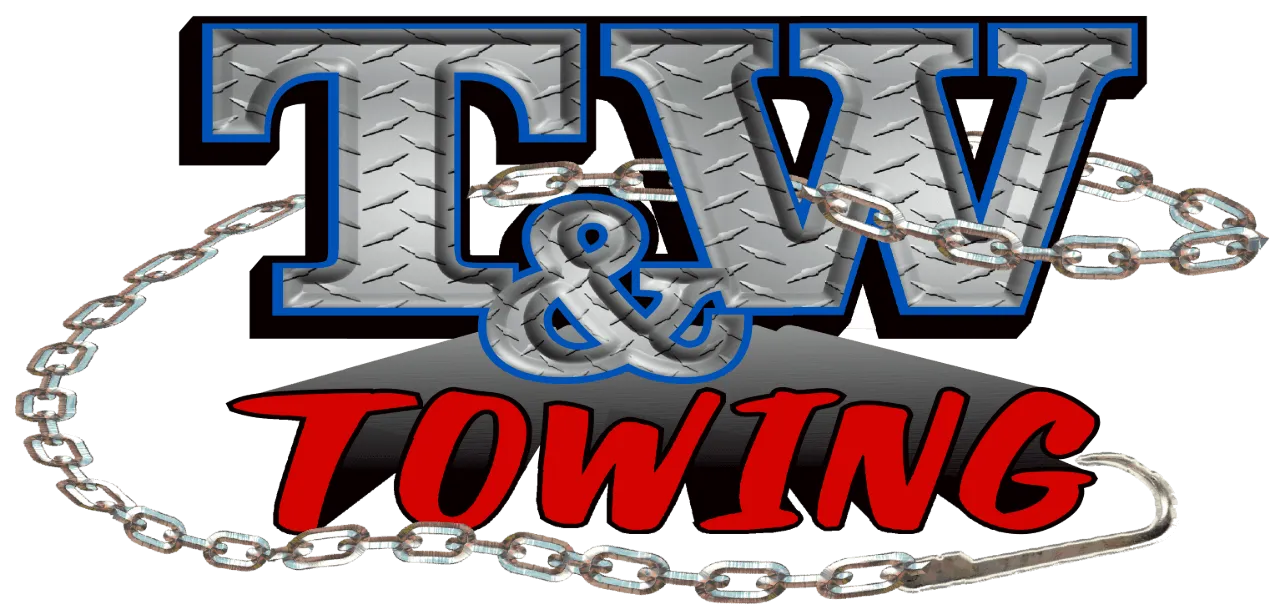Out of the Ditch and Back on Schedule
A jackknifed semi can shut down lanes for hours and create serious safety risks. It’s a real traffic hazard on its own. Add rain, snow, or a narrow embankment, and things get more complicated. We’ve responded to enough towing incidents to know that getting a 70,000-pound machine out of a ditch isn’t something you can rush. Every Albert Lea heavy recovery job we undertake requires planning, teamwork, and the right equipment. When trouble hits along I-35 or on a gravel access road, we’re the ones who show up ready to get things moving again. Here’s a closer look at how we do it.



The Tools of the Trade
Big problems call for serious equipment. We never show up without being prepared.
When a fully loaded trailer tips or a dump truck sinks into soft ground, we rely on specialized recovery gear built to handle tough, oversized situations. Some of the tools we use most often include:
- 50-ton rotator tow trucks with 360-degree lifting capability
- Air cushion recovery systems to raise trailers without added damage
- Heavy-duty winches and rigging for pulling vehicles out of tough spots
- Recovery straps designed to handle extreme weight
- Skid steers and loaders to move debris and reposition stuck vehicles
Albert Lea heavy recovery often involves several of these tools working together. It’s a process that requires control, planning, and a clear understanding of the job.
Real-World Recovery Situations
We can respond to scenes that would stop most people in their tracks: a tour bus lodged on an embankment with passengers still inside. A grain truck resting sideways in a drainage ditch after a missed turn during harvest. Each call presents a different challenge.
Some of the situations we’ve handled include:
- Semis blown over during storms
- Machinery that rolled off unpaved shoulders
- Cement mixers stuck deep in loose soil
- Trailers tangled across multiple lanes
Every Albert Lea heavy recovery we perform comes with its own mix of problems. Weather, load type, vehicle weight, and road conditions all affect how we plan and execute the recovery.
The Strategy Behind the Pull
Getting a rig upright is not just about chains and winches. Each job begins with a careful assessment of the scene. We look at how the weight is distributed and how stable the vehicle is. Then we choose the safest way to proceed. Sometimes we begin by digging out around the tires. In other cases, we lift with airbags to avoid frame damage. The angle of the pull, the type of winch, and the attachment points are all chosen with safety in mind. By the time we start the Albert Lea heavy recovery, we have a plan to get the vehicle moving again without creating further problems.

Trust T & W Towing with Your Albert Lea Heavy Recovery Needs
When a truck ends up off the road, the effects ripple far beyond the scene. Deliveries fall behind. Drivers lose valuable hours. Job sites stall while they wait for supplies. Every delay costs someone time and money. Our Albert Lea heavy recovery team helps get everything back on schedule. At T & W Towing, we show up prepared to solve the whole problem. That means understanding the terrain in and around Albert Lea, working with the load, and clearing the scene in a way that prevents more damage or delay.
This work demands focus, speed, and judgment. We bring all three to every job. Albert Lea heavy recovery is part of what keeps freight moving and businesses running, and we’re proud to be the ones behind that effort.
